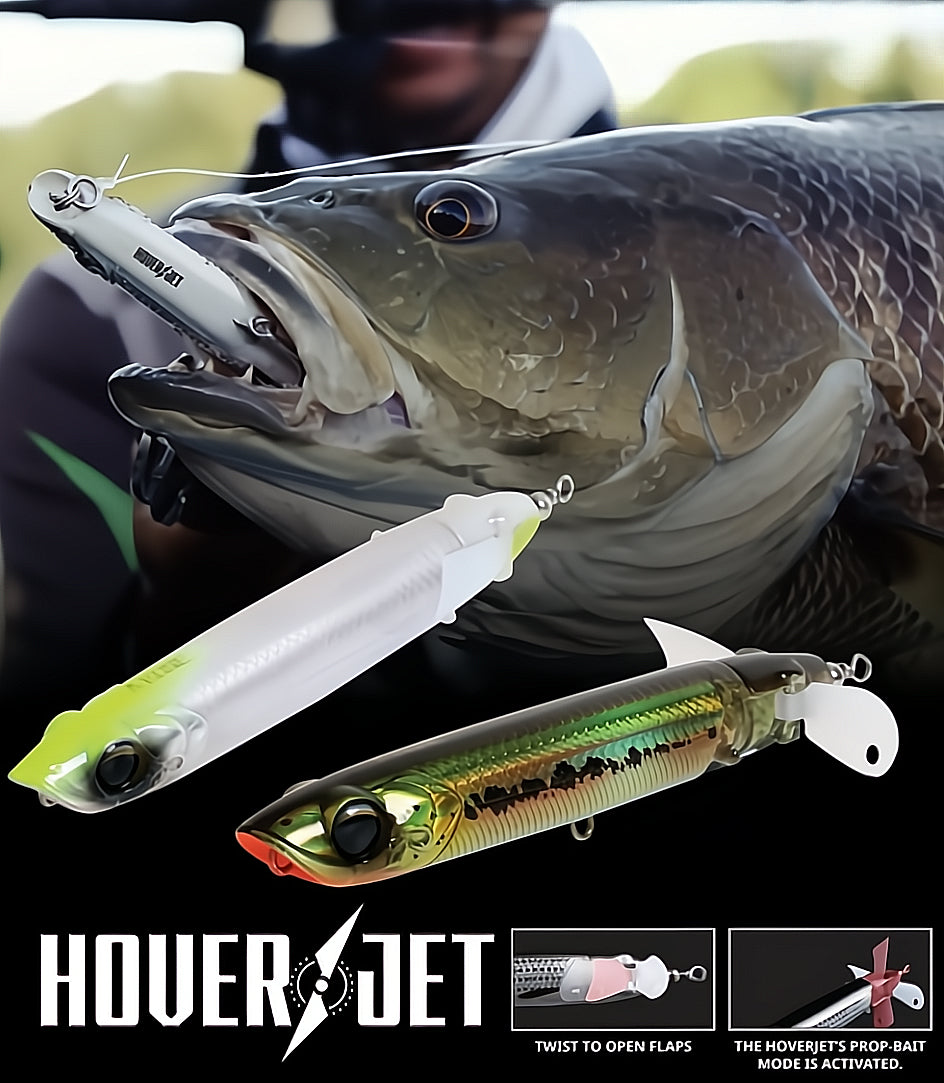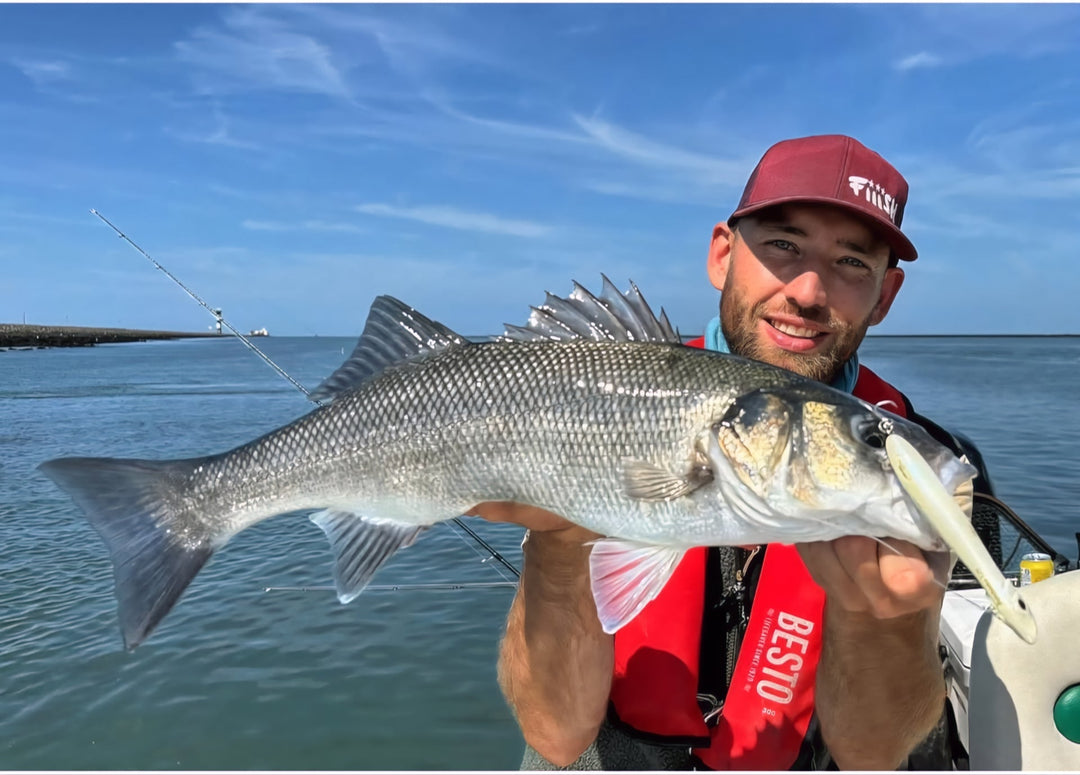Sea bass fishing with lures in the ports of Rotterdam and Europoort

Sea bass (Dicentrarchus labrax), one of the most beloved and sporty predatory fish in Europe, is considered by many anglers as the ultimate challenge. With its power, speed and aggressive bites, it is a fantastic opponent for anglers using artificial bait. The ports of Rotterdam and Europoort offer, due to their unique combination of salt and fresh water, a special fishing area for sea bass. These industrial, yet ecologically rich environments attract a large number of anglers every year who try their luck with this predatory fish.
This article discusses the appeal of the ports of Rotterdam and Europoort for anglers, the main techniques and the use of artificial baits when catching sea bass. We also highlight the challenges of fishing in these industrial environments and provide tips for success.
The Sea Bass Season and Conditions
Sea bass is a seasonal fish species that visits the Dutch coastal waters between the spring and autumn months. In early spring, when the water temperature starts to rise, sea bass enters the coastal waters and harbours to hunt for bait fish, shrimp and crabs. This period runs roughly from May to October, with a peak in the warmer months of July and August.
The ports of Rotterdam and Europoort offer excellent living conditions for sea bass. The mix of fresh and salt water (brackish water) and the abundance of food make these areas attractive. In addition, the many structures such as docks, jetties, pipelines and rocks offer excellent hiding places for the predatory fish. Especially during the changing of the tides, when the current brings food, these places are particularly productive.
The Ports of Rotterdam and Europoort: A Fishing Paradise
The Port of Rotterdam, one of the largest in Europe, is a huge complex of waterways, terminals and industrial infrastructures. The Europoort is an important part of this port, located at the mouth of the Maasvlakte. For the angler, these areas form a fascinating mix of nature and industry.
Important fishing spots :
- Docks and jetties : Along the docks and jetties of the harbor, sea bass can often be found searching for prey hidden between the jetty piles or in the sediment.
- Quay walls : The concrete quays are rich in mussels and crabs, making them a natural breeding ground for sea bass.
- Boulders and breakwaters : These structures provide both shelter and a wealth of food. Bass use these areas to hunt smaller fish and shrimp.
- Inlets and locks : The changing water current at locks causes food such as bait fish to move, which attracts sea bass.
Sea Bass Lures: The Key to Success
Sea bass are active hunters and react strongly to fast moving lures. Artificial lures are preferred over natural baits because they allow you to fish longer distances and search specifically for active predatory fish. There are several types of lures that work well in the ports of Rotterdam and Europoort. Below we discuss the most commonly used techniques and the types of lures that fishermen use.
1. Plugs
Plugs are hard plastic lures that imitate the shape and movement of a prey fish. They are available in different sizes, colours and depths, making them adaptable to the conditions.
- Shallow diving plugs are ideal for fishing along quay walls or rocks, where sea bass often hunt close to the bank.
- Deep diving plugs are useful when the fish are deeper in the water, for example along pipelines or when the tides are changing.
One of the advantages of plugs is that they work well in murky water, which is often the case in harbours due to shipping and currents.
2. Softbaits
Softbaits, made of flexible rubber, have a very natural movement in the water. These lures perfectly imitate prey fish such as sand eel or young herring, which are often on the menu of sea bass.
- Shads : These softbaits with a broad, vibrating tail are very effective when fishing slowly with intervals. They can be fished at different depths by weighing them down or down.
- Slugs : These are slim softbaits without moving parts, which glide very naturally through the water. They are ideal for when the sea bass is a bit more passive and reacts slower.
The beauty of softbaits is that, due to their softness, they are held by the sea bass for a longer period of time, which gives the angler a better chance of setting the hook correctly.
3. Jerkbaits
Jerkbaits are designed to move quickly and aggressively through the water, triggering the predatory instincts of bass. These hard, elongated lures are retrieved with quick jerks (the so-called "jerk motion"). This type of lure is especially effective against actively hunting bass in open water or along docks.
4. Topwater lures
For the angler looking for spectacular fishing fun, topwater lures are an absolute must. They are designed to stay on the water surface and imitate injured or fleeing prey fish.
- Popper : These have a concave front that makes a splashing sound when retrieved, attracting sea bass to the surface.
- Walk-the-dog : This type of lure zigzags across the water surface, often eliciting an aggressive response from hunting bass.
Topwater fishing is particularly effective at sunrise or sunset, when sea bass are actively hunting in the upper water layers.
Techniques for Success
In addition to the right lure, technique is of great importance to be successful. In the ports of Rotterdam and Europoort you have to take into account various factors, such as current, depth and the presence of structures. Here are some tips to increase your chances of catching:
1. Fishing for Structures
Bass use structures such as docks, jetties and rocks to hide and hunt. An effective strategy is to fish these structures carefully. Start by casting parallel to the dock or rocks and work your way out to deeper water. Keep in mind that bass often swim close to structure, so your first few casts can produce immediate results.
2. Varying Overtaking Speed
Sea bass can react erratically to different lure speeds. Some days they prefer a slow-moving shad, while other days they react aggressively to a fast-retrieving plug or jerkbait. Experiment with the speed and movement of your lure to find what works best at that moment.
3. Pay attention to tides
The tidal current plays a crucial role in bass fishing. During the incoming tide (high tide) food such as baitfish and shrimps are brought closer to the quays and rocks, which attracts bass. It is therefore often more productive to fish during the incoming tide. During the outgoing tide, bass often move to deeper water, where it can be more difficult to reach them.
4. Using the “Stop-and-Go” Technique
A technique that is particularly effective when fishing with softbaits or jerkbaits is the “stop-and-go”. Here you retrieve the lure with short jerks, alternating with pauses in which the lure floats freely in the water. These unexpected pauses imitate injured or fleeing prey fish, which often causes an aggressive bite from sea bass.
Safety and Environmental Considerations
Fishing in the ports of Rotterdam and Europoort brings specific safety challenges. These are busy, industrial areas with a lot of shipping traffic. Therefore, always take the following into account:
- Be visible : Always ensure you are clearly visible to shipping traffic, especially when fishing from the shore near busy waterways.
- Beware of currents : The current in the harbour areas can be very strong, especially at locks and narrow passages. Preferably fish in quiet places where the current is not too dangerous.
- Environment : Respect nature and take your waste with you. The ports are home to a fragile ecosystem where both industrial activity and nature come together.
Conclusion
The ports of Rotterdam and Europoort form a unique and challenging environment for fishing for sea bass with artificial bait. The combination of industrial infrastructure and natural food sources makes this an ideal area for the angler looking for an adventurous fishing experience. With the right choice of artificial bait, technique and timing, anglers can catch large and powerful sea bass here.
Whether you are an experienced angler or just starting out, fishing in these impressive harbour areas requires patience, precision and respect for the environment. With the right preparation and techniques, you can enjoy one of the most beautiful sport fishing experiences the Netherlands has to offer.
Want to get a taste of the atmosphere regarding sea bass fishing in the Rotterdam ports and Europoort? Then be sure to watch the video below!




